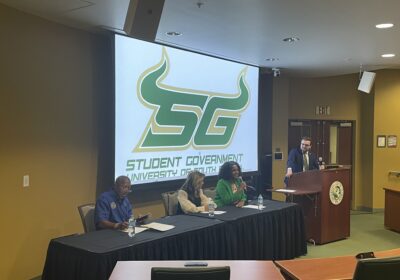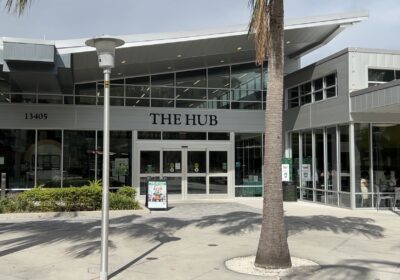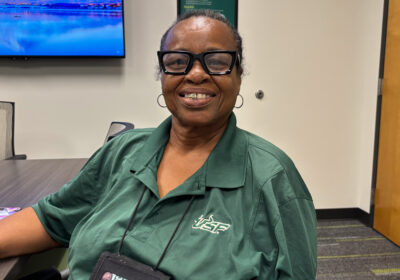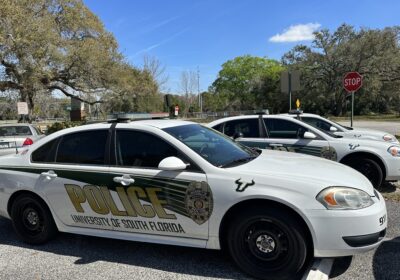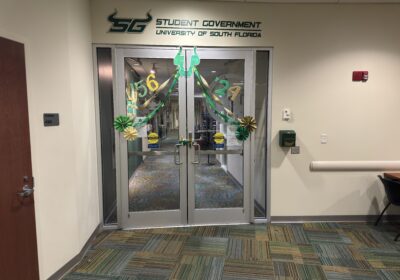Students unsure about impact of BOT fall plan

As the university prepares in August to welcome back thousands of students, faculty and staff to campus for the first time since spring, the college experience and campus life that many were used to might look significantly different as a result of COVID-19.
On Tuesday, the Board of Trustees approved the draft of the Resuming University Operations Amid a Global Pandemic plan to resume campus operations in the fall. In the plan, the university laid out several guidelines and regulations for once campus operations resume to promote the health and safety of the USF community.
For some students, the new guidelines will significantly impact the social aspect of college.
Michelle Brooks, a junior majoring in integrated public relations and advertising, said she will have to find other ways to hang out with her friends in a way that doesn’t jeopardize their health.
Despite the challenges, she is looking forward to being back on campus and attending in-person classes.
“I feel like the new guidelines for the fall reopening are interesting,” Brooks said. “For classes, I plan on attending in person if given the option because I learn better that way. I will just be aware to wear a face mask and distance myself from as many people as possible.”
Students will be required to use face coverings in shared spaces and, if not met, the student could be removed from the activity and/or be subject to disciplinary action.
As a way to mitigate the spread of COVID-19, the university will provide hand sanitizers on all campuses as well as two reusable cloth face masks for each student, faculty and staff, according to the plan.
Kennedy Marthaler, a junior majoring in biological health sciences, said it will be upsetting to see how different campus life will look like in the fall.
“The fact that we will be required to wear masks in class and in other areas, along with the requirement to social distance and not have group gatherings in certain areas is sad and makes me a lot less excited to go to school,” Marthaler said.
“The new guidelines that USF will be following to open in fall, although completely understandable due to the obvious risks that have been linked to COVID-19, are really disappointing to hear.”
With social distancing guidelines still in place, the future of campuswide events is still uncertain. With that, student organizations are having to stretch their creativity when planning for events once campus reopens.
Thomaz Musman, a junior majoring in mass communications and management, is part of USF Hillel. Musman said the organization is still unsure how regular events will be held and how students would interact with each other.
“I believe that the new guidelines will impact a lot of the life on campus, as the amount of people that walk around on a daily basis are many, and it’s hard to avoid human contact with others, especially when going between classes from building to building,” Musman said.
“Another thing we need to remember is how student organizations and other campus events will be occurring, as continuing to provide online contact while still being on campus might not be as easy and satisfactory as it should.”
With the university’s phased approach to resume normal campus operations in the fall, campuswide events may only resume with a limit of 50 attendees. Depending on the Centers for Disease Control and Prevention’s guidelines, unrestricted events may resume in phase four.
In regard to classes, Musman said he will be taking in-person classes as most of his schedule consists of hands-on instruction. However, depending on the final guidelines, some in-person classes “might be harder to opt for.”
“I see that the classes where many people get together, like auditoriums and such, will be harder to control and define, as those usually have fewer sections for students to choose from.”
In the fall semester, face-to-face classes of over 100 students will be required to be conducted virtually while class sizes of 50-100 will be “strongly encouraged” for virtual delivery.
For senior Tim Hagen, the plan is a “fumble.”
“The largest danger in the spread at the university should be recognized as students that are sitting inside in unventilated tight classrooms that transition students throughout the day,” Hagen said. “I think this plan would be much more accommodating than what they’re explaining here for the professors and students.”
While some students can’t wait for the moment they step foot on campus, others feel more apprehensive about going back.
Melanie Guerra, a junior majoring in microbiology, said she is still unsure about returning in the fall despite registering for in-person classes.
“I’m waiting for my professors to send out their plans because I don’t want to spend so much money and time for an experience I could do at home,” Guerra said. “Overall, I’m a bit sad, frustrated and apprehensive.”
Besides facing the challenge of commuting, Guerra said the guidelines and measurements being implemented by the university might be difficult to enforce due to its large student body.
“Spaces such as the library and the [Marshall Student Center] are so heavily used that it would be hard for them to function well with the guidelines,” Guerra said.
For Brittany Warden, a junior majoring in psychology, so long as the guidelines are enforced, she is not worried about taking in-person classes.
“I feel like the new guidelines are great precautions in ensuring that the coronavirus doesn’t spread on campus and affect the lives of the students and their families,” Warden said. “I think it’s going to be less crowded on campus for sure, and we probably won’t have some of the amenities that we did before, or they will be very different.”
Amid uncertainties surrounding how the fall semester will unfold, Marthaler said she is remaining positive.
“I hope the whole situation changes somehow and we don’t have to have as many restrictions in place,” Marthaler said.

